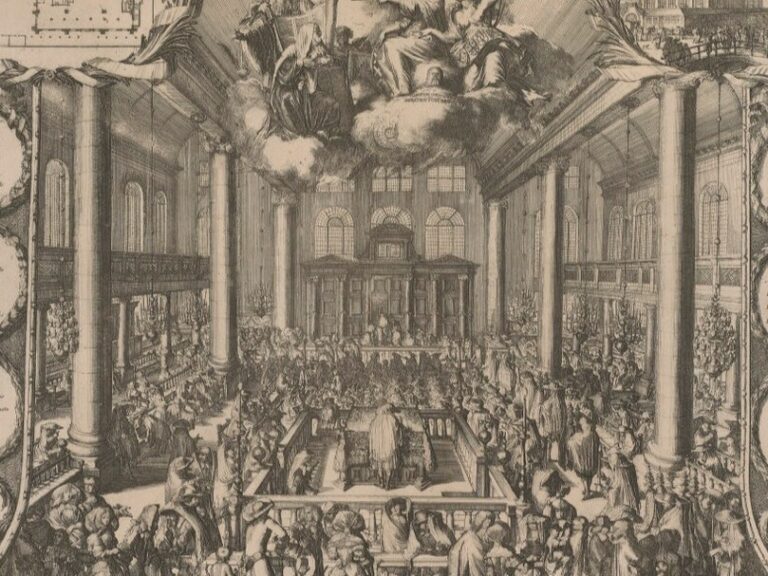This Hanukkah let’s remember celebrations of the dedications of different synagogues throughout history. At its core, Hanukkah (Hebrew for dedication) is a celebration of the rededication of the Jerusalem Temple and therefore of all Jewish houses of worship.
On August 2, 1675, the eve of Sabbath, the Portuguese Jews of Amsterdam dedicated their magnificent new synagogue known as the Esnoga. Their new building was meant to rival — and surpass — the nearby Great Synagogue of the Ashkenazic Jews. The Esnoga was the largest synagogue in the world, seating over 1,200 men in the main hall and 400 women and visitors in the galleries. The new synagogue building created a groundswell of interest among Jews and Christians, and for years to come—and even today—the Esnoga became a regular stop for visitors to the city. The dedication, following the model of Hanukkah, turned into eight days of celebrations and each year on the anniversary of the dedication, the community memorialized the event.
This commemorative etching depicts the initial moments of the celebratory dedication. The choir sang, young men held lit tapers aloft and community leaders carried lavishly bedecked Torah scrolls around the sanctuary three times. The hazzan (cantor), seen at center, recited prayers for the government, and the scrolls were placed into the ark. Inscribed in medallions on either side of the print are the names of the members of the Mahamad (governing board of the community) and the building committee. At the top of the print, centered between an exterior view and a floor plan, is a symbolic representation of Dutch religious tolerance. Personifications of the Republic of the Seven United Provinces, Judea, the High Priest and Freedom of Worship are depicted above the phrase: Freedom of Worship is the Mainspring of the Republic.
See more images of historic synagogues at our Library exhibit: A Sacred Space: Synagogue Architecture and Identity.
by jtsvoice

